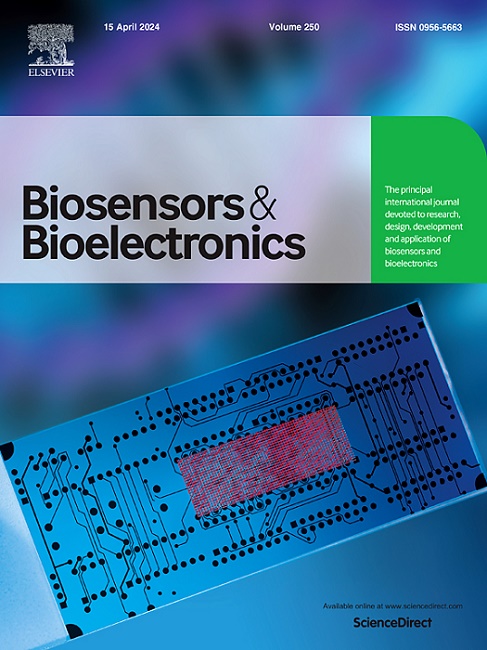Simultaneous noninvasive ultrasensitive detection of prostate specific antigen and lncRNA PCA3 using multiplexed dual optical microfibers with strong plasmonic nanointerfaces
Abstract
Low accuracy of diagnosing prostate cancer (PCa) was easily caused by only assaying single prostate specific antigen (PSA) biomarker. Although conventional reported methods for simultaneous detection of two specific PCa biomarkers could improve the diagnostic efficiency and accuracy, low detection sensitivity restrained their use in extreme early-stage PCa clinical assay applications. In order to overcome above drawbacks, this paper herein proposed a multiplexed dual optical microfibers separately functionalized with gold nanorods (GNRs) and Au nanobipyramids (Au NBPs) nanointerfaces with strong localized surface plasmon resonance (LSPR) effects. The sensors could simultaneously detect PSA protein biomarker and long noncoding RNA prostate cancer antigen 3 (lncRNA PCA3) with ultrahigh sensitivity and remarkable specificity. Consequently, the proposed dual optical microfibers multiplexed biosensors could detect the PSA protein and lncRNA PCA3 with ultra-low limit-of-detections (LODs) of 3.97 × 10−15 mol/L and 1.56 × 10−14 mol/L in pure phosphorus buffer solution (PBS), respectively, in which the obtained LODs were three orders of magnitude lower than existed state-of-the-art PCa assay technologies. Additionally, the sensors could discriminate target components from complicated physiological environment, that showing noticeable biosensing specificity of the sensors. With good performances of the sensors, they could successfully assay PSA and lncRNA PCA3 in undiluted human serum and urine simultaneously, respectively. Consequently, our proposed multiplexed sensors could real-time high-sensitivity simultaneously detect complicated human samples, that providing a novel valuable approach for the high-accurate diagnosis of early-stage PCa individuals.

 求助内容:
求助内容: 应助结果提醒方式:
应助结果提醒方式:


